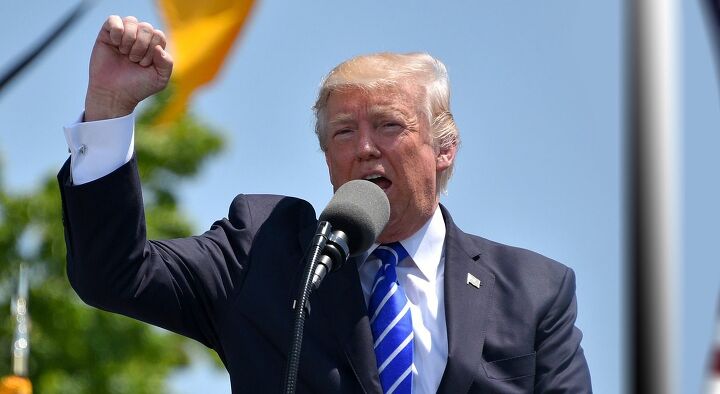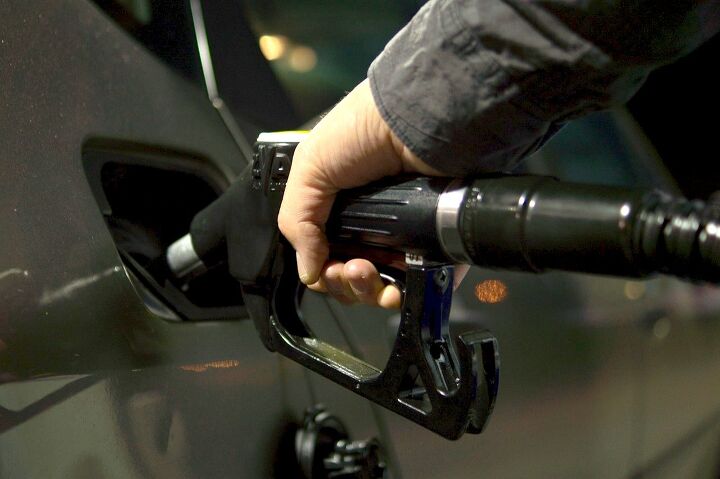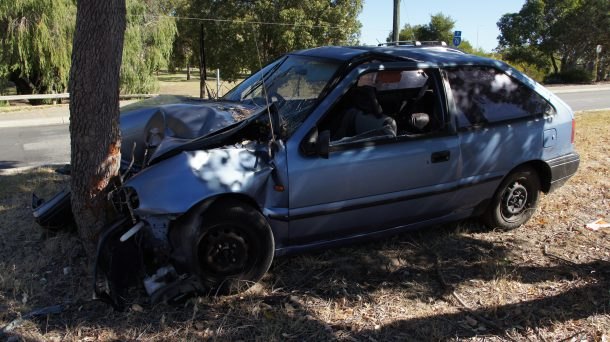#DepartmentOfTransportation
Are Government Officials Souring On Automotive Autonomy?
Thanks to the incredibly lax and voluntary guidelines outlined by the National Highway Traffic Safety Administration, automakers have had free rein to develop and test autonomous technology as they see fit. Meanwhile, the majority of states have seemed eager to welcome companies to their neck of the woods with a minimum of hassle. But things are beginning to change after a handful of high-profile accidents are forcing public officials to question whether the current approach to self-driving cars is the correct one.
The House of Representatives has already passed the SELF DRIVE Act. But it’s bipartisan companion piece, the AV START Act, has been hung up in the Senate for months now. The intent of the legislation is to remove potential barriers for autonomous development and fast track the implementation of self-driving technology. But a handful of legislators and consumer advocacy groups have claimed AV START doesn’t place a strong enough emphasis on safety and cyber security. Interesting, considering SELF DRIVE appeared to be less hard on manufacturers and passed with overwhelming support.
Of course, it also passed before the one-two punch of vehicular fatalities in California and Arizona from earlier this year. Now some policymakers are admitting they probably don’t understand the technology as they should and are becoming dubious that automakers can deliver on the multitude of promises being made. But the fact remains that some manner of legal framework needs to be established for autonomous vehicles, because it’s currently a bit of a confused free-for-all.
Arizona, Suppliers Unite Against Uber Self-driving Program
Ever since last week’s fatal accident, in which an autonomous test vehicle from Uber struck a pedestrian in Tempe, Arizona, it seems like the whole world has united against the company. While the condemnation is not undeserved, there appears to be an emphasis on casting the blame in a singular direction to ensure nobody else gets caught up in the net of outrage. But it’s important to remember that, while Uber has routinely displayed a lack of interest in pursuing safety as a priority, all autonomous tech firms are being held to the same low standards imposed by both local and federal governments.
Last week, lidar supplier Velodyne said Uber’s failure was most likely on the software end as it defended the effectiveness of its hardware. Since then, Aptiv — the supplier for the Volvo XC90’s radar and camera — claimed Uber disabled the SUV’s standard crash avoidance systems to implement its own. This was followed up by Arizona Governor Doug Ducey issuing a suspension on all autonomous testing from Uber on Monday — one week after the incident and Uber’s self-imposed suspension.
Unpacking the Autonomous Uber Fatality as Details Emerge [Updated]
Details are trickling in about the fatal incident in Tempe, Arizona, where an autonomous Uber collided with a pedestrian earlier this week. While a true assessment of the situation is ongoing, the city’s police department seems ready to absolve the company of any wrongdoing.
“The driver said it was like a flash, the person walked out in front of them,” explained Tempe police chief Sylvia Moir. “His first alert to the collision was the sound of the collision.”
This claim leaves us with more questions than answers. Research suggests autonomous driving aids lull people into complacency, dulling the senses and slowing reaction times. But most self-driving hardware, including Uber’s, uses lidar that can functionally see in pitch black conditions. Even if the driver could not see the woman crossing the street (there were streetlights), the vehicle should have picked her out clear as day.
Self-Driving Uber Vehicle Fatally Strikes Pedestrian, Company Halts Autonomous Testing
In the evening hours of March 18th, a pedestrian was fatally struck by a self-driving vehicle in Tempe, Arizona. While we all knew this was an inevitability, many expected the first casualty of progress to be later in the autonomous development timeline. The vehicle in question was owned by Uber Technologies and the company has admitted it was operating autonomously at the time of the incident.
The company has since halted all testing in the Pittsburgh, San Francisco, Toronto, and greater Phoenix areas.
If you’re wondering what happened, so is Uber. The U.S. National Transportation Safety Board (NTSB) has opened an investigation into the accident and is sending a team to Tempe. Uber says it is cooperating with authorities.
Safety Group to Senate: Clue in to the 'Baseless and Exaggerated Predictions' Swirling Around Autonomous Vehicles
Last year, the National Highway Traffic Safety Administration embraced autonomous technology by redefining how it categorized cars. Spurred by automakers and tech companies, the government has opened its eyes to this new technology and seen it as a way to potentially save lives by reducing the number of roadway accidents caused by human error.
Congress has been confronted with numerous pieces of legislation on the matter, too — prospective laws that would allow automakers to put hundreds of thousands of autonomous vehicles on the street, without the need to adhere to existing safety regulations. Many have called the move necessary if the United States hopes to be the first country to produce a truly self-driving car and start saving some lives.
It sounds almost too good to be true, and some claim it actually is. A group of public interest organizations is attempting to sound the bullshit alarm, claiming automakers are misleading government officials in the hopes of developing and profiting from unproven technology.
Senate Fumbles With Self-driving Legislation
Bipartisan legislation to “promote the safe development of autonomous vehicles” is currently being held up by a trio of Democrats, according to U.S. Senate Commerce Committee Chairman John Thune. While much of Congress is hoping to push the AV START Act through, Sen. Dianne Feinstein and two colleagues have blocked unanimous consent — stalling the bill’s swift progress by forcing a floor vote.
Thune, who sponsors Senate Bill 1,885, told reporters he hoped Feinstein and the other Democrats would see the light. “We could save a lot of lives,” Thune said, adding that 94 percent of car crashes are caused by human error. “It is cutting-edge technology, transformational in terms of the economy.”
However, the opposition isn’t convinced autonomous vehicles are at a point where it’s safe to roll them out en masse on public roads.
Proposed Legislation Would Make It Easier for Automakers to Meet Efficiency Requirements
A bipartisan pair of congressional representatives from Michigan are proposing a new bill, the Fuel Economy Harmonization Act, that would aid automakers in complying with federal fuel efficiency requirements. Introduced on Wednesday, the bill would extend the life of fuel economy credits that are set to expire in five years and raise the ceiling on transferrable credits between car and truck fleets. Under the proposal, manufacturers could also be given additional credits for lowering fleet-wide emissions under new metrics.
Penning the bill, congresspersons Fred Upton (Republican) and Debbie Dingell (Democrat) said they believed the automotive industry would benefit from having a single set of fuel rules. The bill suggests rolling the NHTSA’s Corporate Average Fuel Economy (CAFE) and the EPA’s light-duty vehicle Greenhouse Gas Emissions mandates into one cohesive program.
While economy mandates have been growing, nationwide fuel consumption has still gone up. Likewise, the average mpg of cars sold in the United States hasn’t changed much over the last three years. With pump prices remaining low, consumers have flocked to less-efficient models like crossovers and SUVs.
NHTSA Appoints New Deputy Administrator, Still No Department Head
Last week, we discussed how the National Highway Traffic Safety Administration had some staffing gaps that needed shoring up. While it remains shy one administrative head, the White House saw fit to officially appoint a new deputy administrator — effectively replacing acting deputy administrator Jack Danielson’s interim leadership.
Danielson has served as the NHTSA’s executive director since 2015, but spent the last eight months filling in for an absent department figurehead. He’s being relieved by Heidi King, an economist with the federal government and experience in the private-sector.
You Not Having a Car With 'Superpowers' is Somehow Donald Trump's Fault
Supposedly, everyone eagerly anticipates the day they can own a shiny-new self-driving car, but automakers, regulatory agencies, consumer advocates, Silicon Valley, and the White House are debating how exactly that’s supposed to happen. They haven’t reached a consensus yet — and that’s probably not likely to change anytime soon.
Most autonomous cars rely on array of cameras, LIDAR, GPS, inertial measurement devices, and complex control systems used to interpret sensory information before reacting accordingly. Vehicle-to-vehicle communication systems (V2V) are regarded by many as essential components to establishing fully automated travel. The theory is that, by allowing cars to communicate directly on a broadband frequency, they can better predict each other’s movements.
However, a recent Bloomberg article accuses the technology of “going nowhere fast,” citing the Trump administration as the chief culprit, and alluding to the direct stifling of technology that would give cars “superpowers” in the next few years.
I probably won’t have the opportunity to say this often — and it feels kind of strange to say it now — but these accusations aren’t entirely fair to the president or his administration.
Give the U.S. Government a Piece of Your Mind About Fuel Economy Rules
While the Trump administration continues gearing itself up to loosen fuel standards for automakers, much to the chagrin of environmentalists and other countries, the agencies that set those benchmarks want to pick your brain a little before making a final decision. You’ve got an opportunity to be part of the process — the painfully boring, yet incredibly important, process.
On Thursday, the U.S. Environmental Protection Agency and the Department of Transportation opened a public comment period on the reconsideration of the standards for greenhouse gas emissions for light vehicles built for the 2022-2025 model years. Additionally, the EPA wants comments on the appropriateness of the existing 2021 standards. The agencies are inviting the public to submit any relevant (i.e. factual) data and information that can inform a final decision of the standards.
Hat Trick: Automotive Recalls Reach Record High for Third Year in a Row
Automobile manufacturers recalled an all-time high of 53.2 million vehicles in the United States last year. The record-breaking number would not have been possible without the continued expansion of the recall of extremely dangerous Takata airbag inflators, according to the U.S. Transportation Department. Of course, it’s not just Takata Corp. that helped make 2016 the worst year on record, so be sure to save your applause.
Encouraged by the Obama administration, the Department of Transportation enacted a whopping 927 recall campaigns last year. That’s 7 percent above the previous high set in 2015. Fatal accidents jumped up 10.5 percent that year, followed by another 8 percent in 2016.
U.S. Department of Transportation Proposes Mandatory 'Talking Car' Technology to Prevent Crashes
The United States Department of Transportation has proposed a rule that would require vehicle-to-vehicle communication technology in all new cars.
Vehicle-to-vehicle systems allow cars to communicate information to each other that could be used to update drivers about potential accidents, possibly reducing the number of crashes on U.S. roadways. The basic technology uses short-range radios to send and receive vehicle data on location, speed, direction, and braking status. While extremely useful in the application of autonomous driving technology, a lot of the potential safety applications resulting from V2V has not yet been conceived.
Columbus Wins Federal 'Smart City' Grant, Meaning More EVs in a State Without Much Green Power
Columbus, Ohio was chosen as the winner of the U.S. Department of Transportation’s “Smart City Challenge,” beating out six other mid-size cities for the $40 million federal grant.
With that grant and $100 million pledged from philanthropic and business sources on tap, the city’s plan will see improvements in social infrastructure and green, connected transportation — including greater electric vehicle use and new recharging infrastructure — despite the fact that Ohio’s power grid isn’t very green.
DOT Goes Wikileaks on Dealers, Puts Your Car's Secrets Online
Your vehicle’s hidden flaws and most shocking (mechanical) secrets will soon be just a click away.
The Department of Transportation is ending the clandestine relationship between your car’s dealer and the manufacturer by posting all Technical Service Bulletins (TSB) online, according to Consumer Reports.
TSBs, which outline the recommended procedure for repairing vehicles, will be posted in PDF form on the safercar.gov website.
Heads of Automakers in US Meet In Washington, Discuss Safety, Recalls
Auto executives from nearly every major U.S. automaker met in Washington D.C. on Tuesday to discuss safety, recalls and technology with Secretary of Transportation Anthony Foxx, Automotive News reported.
Senior executives from 15 automakers, including General Motors’ CEO Mary Barra, Fiat Chrysler Automobiles CEO Sergio Marchionne, Volkswagen of America CEO Michael Horn and Nissan North America boss Jose Munoz, met to address Foxx’s concerns that “the public has lost faith in the auto industry’s commitment to safety,” according to a letter obtained by Automotive News.
The recent snowballing recall crises at GM, FCA and other automakers concerning Takata’s airbag inflators prompted the meeting, according to reports. A spokesman for the Transportation Department said the meeting was “very productive.”





![Unpacking the Autonomous Uber Fatality as Details Emerge [Updated]](https://cdn-fastly.thetruthaboutcars.com/media/2022/07/19/9193994/in-wake-of-crashes-public-confidence-in-self-driving-cars-pulls-a-u-turn.jpg?size=720x845&nocrop=1)






















Recent Comments